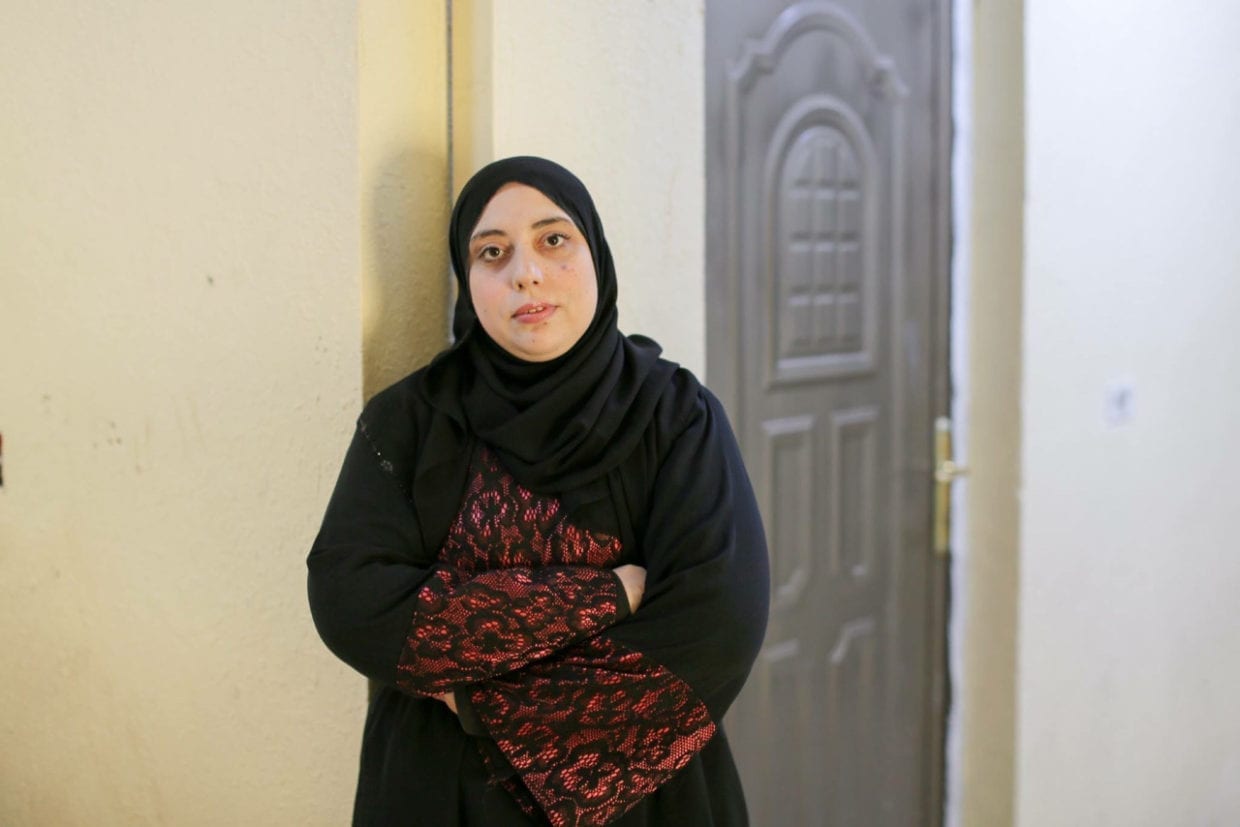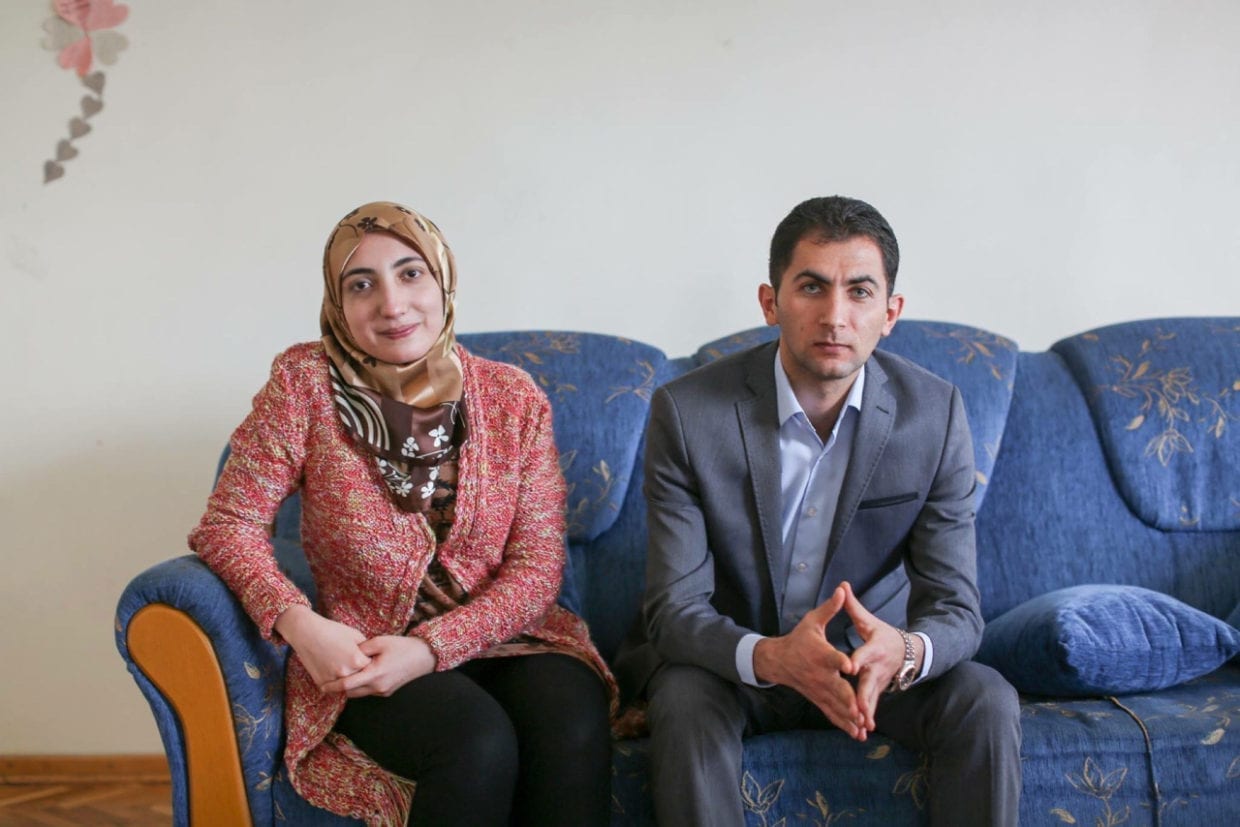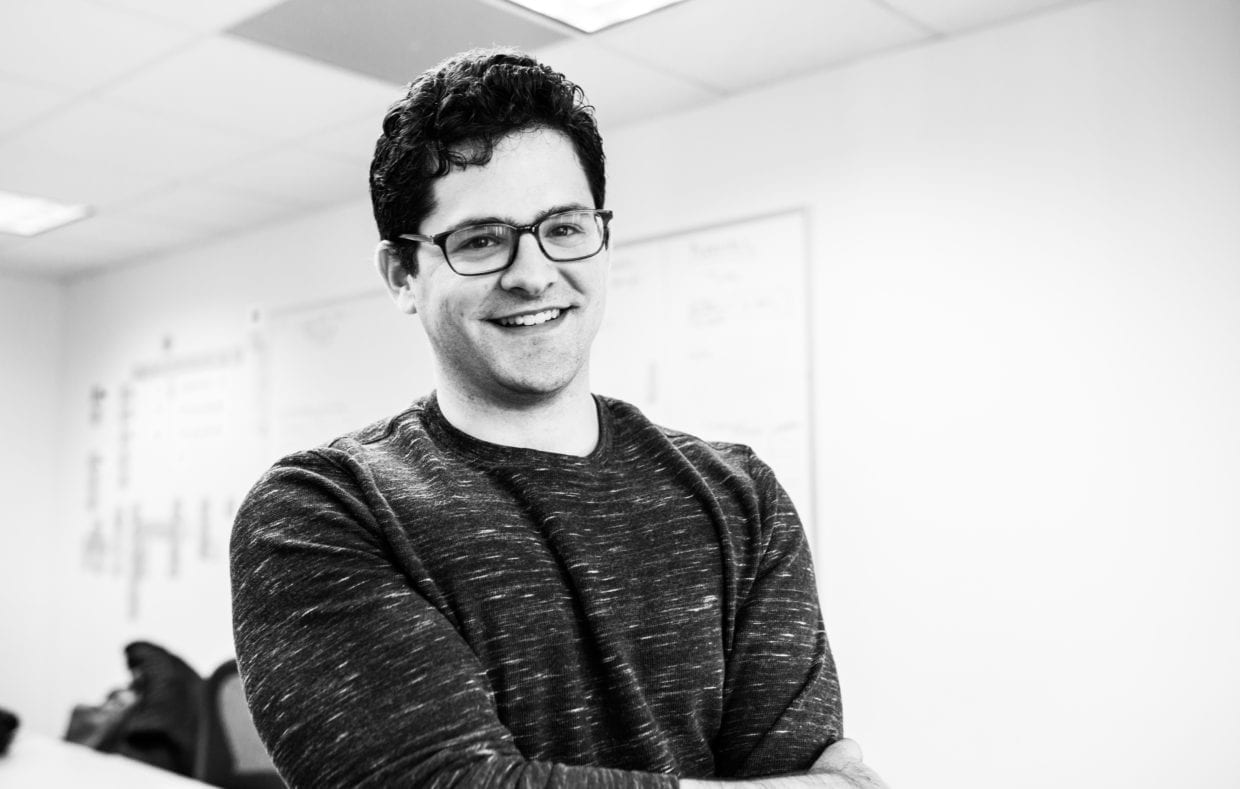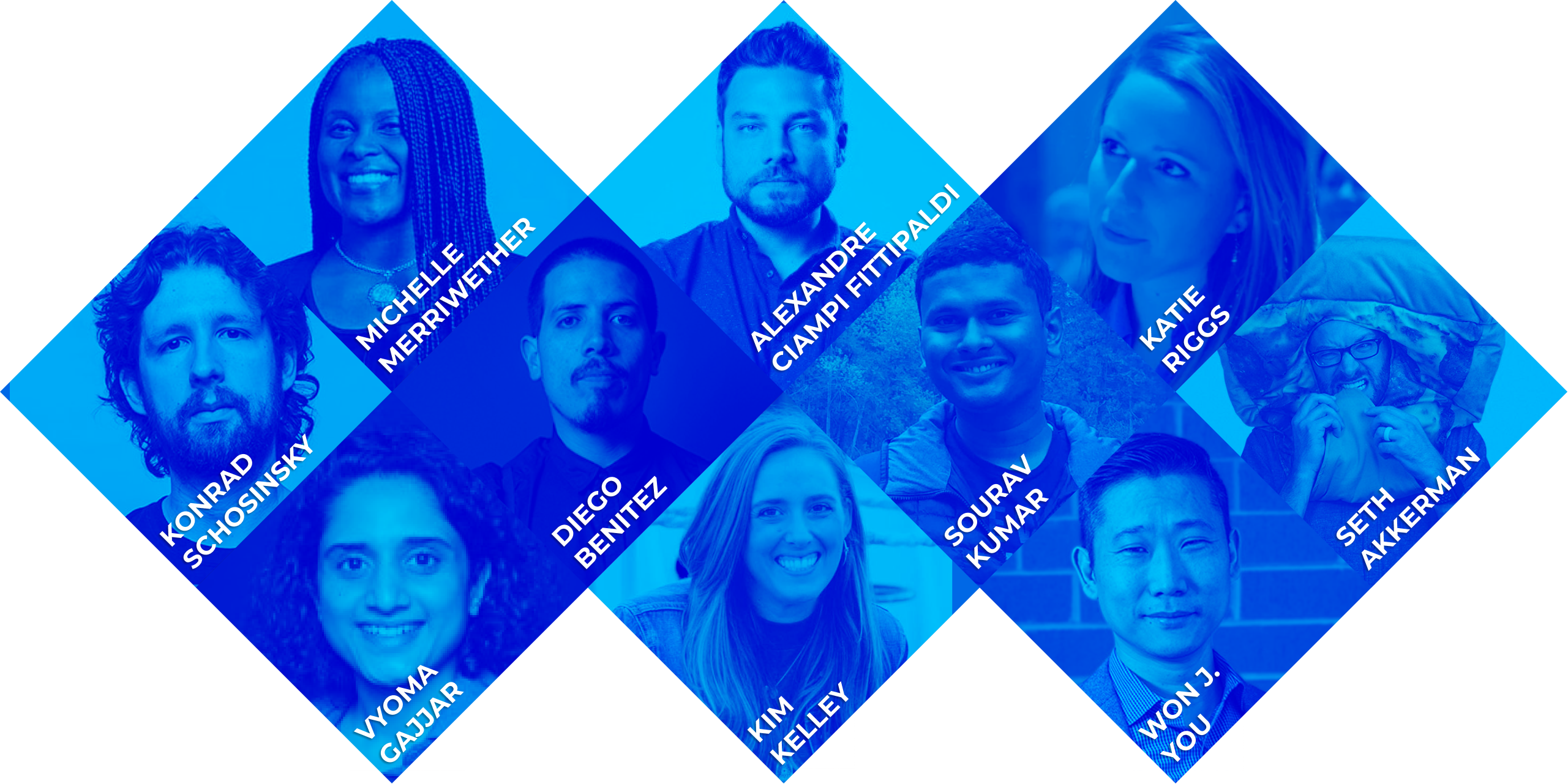When the photo of a Syrian toddler washed up on a Turkey beach appeared in his newsfeed, Jason Wu was getting restless. It was September of last year, and he’d just left his job as a product manager at Facebook’s Silicon Valley HQ—in some ways, exactly the kind of job he’d wanted back as a UC Berkeley computer science student. But at 29, having been ensconced in cush startup culture of T-shirt swag and free meals surrounding the challenging technical work, he was starting to mull a new question: “To what end?” Considering the options, he didn’t want to join one of the many mobile app companies proliferating in the valley that solved the problems of the same wealthy young people who make them. “I wanted something that was pretty different than what was being offered over there.”
He says “over there,” because he’s sitting in a conference room in Washington, D.C., where he works at the startup created by the White House: the United States Digital Service. Once Wu applied and was accepted, he signed up for its refugee project. “If I were one more person at Uber, how much of an impact would I make?” Wu says. “Versus one more person on a refugee program?”
From today’s vantage point, the moment the toddler photo hit the news in September 2015 seems a simpler time—before the Paris attacks, in which one terrorist had a fake Syrian passport, before Trump’s call to ban all Muslim refugees from entering the country, before the bevy of mostly Republican governors saying they wouldn’t accept Syrian refugees in their states, before refugees would rise to play a divisive starring role in a bitter presidential race. Back then, the photo spurred outraged calls for Western countries to take more refugees. To help with the flow, President Obama raised the ceiling of refugees permitted to enter the country in the coming year from 70,000—a consistent number over the previous few years—to 85,000. Ten thousand of those people were to be Syrians.
 The call rattled around the octopus of federal departments involved in the byzantine refugee admissions process. It had already seemed a full-capacity job to bring 70,000 refugees a year, which—politics and the complicated human issues aside—is a matter of global logistics: applications vetted, security checks cleared, flights scheduled. “You’re not going to be able to create a one-button food delivery app to get a refugee through,” says Wu. “The systems are extraordinarily complex.”
The call rattled around the octopus of federal departments involved in the byzantine refugee admissions process. It had already seemed a full-capacity job to bring 70,000 refugees a year, which—politics and the complicated human issues aside—is a matter of global logistics: applications vetted, security checks cleared, flights scheduled. “You’re not going to be able to create a one-button food delivery app to get a refugee through,” says Wu. “The systems are extraordinarily complex.”
Each case must prove to the UN that they meet the legal definition of “refugee,” someone who cannot return to their country due to violence, war, or fear of persecution. Those referred to the United States must pass the highest security clearance of any traveler coming to the country. A web of federal agencies vet each candidate (to wit: Department of Homeland Security, the National Counterterrorism Center, FBI, multiple intelligence agencies, and the Departments of State and Defense). The refugees’ fingerprints are checked against law enforcement databases, their biographical details corroborated with records. The agencies check for outstanding warrants, security risks, and connections to bad actors—and may be subject to more interviews if any new information comes up that needs further scrutiny.
Syrians undergo even more checks: Homeland Security officers gather more information in their interview, a United States Citizen and Immigration Services refugee specialist must review the case. Those with any security flags are given to Homeland Security’s fraud detection or the National Security Directorate. In addition, all refugees are screened for contagious diseases, take a cultural orientation class, and are matched with a resettlement agency—with the applications continuing to be checked against terrorist databases with the passing months.
No wonder the process averages a year and a half to two years. Says State Department Spokeswoman Danna Van Brandt of hearing the increased target: “The reaction was both oh my gosh, how are we going to do this? And also we really have to do this!”
But they would also get some help from a new force in Washington that Wu had joined, for whom things like spreadsheets and data and systems hacks is a professional passion. The idea for the United States Digital Service—now 200 people strong—had started with the Healthcare.gov fiasco in 2013, when the White House recruited a handful of engineers across the country to bail out the embarrassing $300 million Obamacare website that failed. The rescue squad was hastily assembled by then-U.S. Chief Technology Officer Todd Park: The members included one of the whiz kids that sifted through data to find persuadable voters for Obama’s 2012 campaign, plus recruits from Google, the DNC’s tech operation, and a former VP of engineering from Twitter. They hunkered down in a Maryland office park for six weeks straight without weekends, much sleep, or even regular changes of clothes until they had a site that worked.
 The successful sprint led to the White House realizing a small, relatively inexpensive group of engineers, product managers, and designers could yield outsized impacts. They spun up a program to recruit idealistic techies to work a one or two year stint in Washington—long enough to get something done, short enough to not become a piece of the bureaucracy. “Nothing would be worse than if in 20 years our biggest accomplishment has been updating the government to the status of technology 20 years ago,” says Eric Hysen, a D.C.-area former Googler who was one of the early engineers to join the Digital Service.
The successful sprint led to the White House realizing a small, relatively inexpensive group of engineers, product managers, and designers could yield outsized impacts. They spun up a program to recruit idealistic techies to work a one or two year stint in Washington—long enough to get something done, short enough to not become a piece of the bureaucracy. “Nothing would be worse than if in 20 years our biggest accomplishment has been updating the government to the status of technology 20 years ago,” says Eric Hysen, a D.C.-area former Googler who was one of the early engineers to join the Digital Service.
In its first two years, the Digital Service has already racked up wins and some scrutiny from longtime government IT purveyors: They’ve streamlined the online enrollment for veterans’ benefits, revamped the application for a replacement green card, and hosted a Hack the Pentagon event that paid white-hat hackers to find bugs in the public-facing websites of the Department of Defense. This year, Digital Service cofounder Haley Van Dyck, who’d been a senior White House technology advisor, made a feisty appeal for better gov tech in a TED talk: “Government’s failure to deliver digital services that work is disproportionately impacting the very people who need it most,” like students, the working poor, and veterans. “Government is a lifeline that delivers services they need and depend upon and deserve, which is quite frankly why government needs to get its shit together and catch up. Just saying.”
And the refugee system didn’t just need to catch up, but speed up. “You don’t think of our skills” – the coding sort – “being the type that can be used for people fleeing persecution and war,” says Hysen, the former Googler who now leads the Digital Service within the Department of Homeland Security. Still, Hysen says, “it became the easiest Digital Service process to get people to work on.” Wu eagerly became one of them, driving cross-country in his Volkswagen Golf to join the effort. “It had a clear, direct line to the impact it had on human beings in the world at the greatest possible need for help right now,” he says. The Digital Service “gave a chance to maybe scratch that itch.”
 Another recruit was Digital Service member Chase Kimball, a 30-year-old bespectacled process engineer who specializes in data. In a former job, he modernized the White House’s correspondence office, in which letters to citizens were addressed in calligraphy by a troop of elderly volunteers. (Kimball hooked the letter request system up to Salesforce, limiting the fancy penmanship.) When he was dispatched to the refugee project in December, he took a look at the metrics: the process itself averaged two years, and there were only 10 months left until deadline.
Another recruit was Digital Service member Chase Kimball, a 30-year-old bespectacled process engineer who specializes in data. In a former job, he modernized the White House’s correspondence office, in which letters to citizens were addressed in calligraphy by a troop of elderly volunteers. (Kimball hooked the letter request system up to Salesforce, limiting the fancy penmanship.) When he was dispatched to the refugee project in December, he took a look at the metrics: the process itself averaged two years, and there were only 10 months left until deadline.
“Where’s that pipeline coming from?” Kimball says. “We have to drive it through efficiencies” – ones that couldn’t compromise security, and had no room for error. With the refugee rhetoric getting more rabid by the day, and Obama steadfast in his calls for more refugees, the Digital Service team quietly stepped into the data-driven eye of a gnarly political storm.
•••
Trump was already calling on a ban on Muslims by the time agency decision-makers filed into the Refugee Processing Center across the Potomac from the White House in January. The tower in Rosslyn, Virginia, had one distinguishing detail: space 32d in the parking garage, where Deep Throat disclosed the Watergate scoop to the Washington Post. Up above, Digital Service members wanted to disrupt a less direct method of transmitting info—what Kimball dubs “stovepipe decision-making.” Many times in government, staffers with on-the-ground knowledge of a problem pass their intel up the hierarchy of their own agency. Leaders share the information with other agency heads at periodic policy meetings. They make decisions that are then passed back down the hierarchy to the people who carry it out. That’s not exactly efficient.
“ We were successful to show we're not just the Silicon Valley cool kids here to steal the credit for all the hard work they've been doing. We're here to understand the challenges and here to empower them.”
Yet the Digital Service had an outsider’s advantage to change that: “We often get called in for a computer problem,” says Digital Service spokeswoman Deepa Kunapuli. “And it ends up being a human problem.” They asked directors and deputy directors, staff and branch officers from the State Department and Homeland Security to meet in the same room with frontline refugee processing officers to discuss how they could get more refugees through the door. They called the group the Refugee Coordination Center. They’d function in two-week sprints—identifying immediate problems, and reporting back on the progress at the next meeting.
But first, the tech-speaking newcomers had to set the right tone. “We were successful to show we’re not just the Silicon Valley cool kids here to steal the credit for all the hard work they’ve been doing,” says Eric Hysen. “We’re here to understand the challenges and here to empower them, because they are coming into work every day trying to serve their country. When we say, ‘We’re here to help you do that, and you have a lot of experience that’s very different from ours,’ we end up collaborating very well.”
And the urgent issue at hand was: What short-term change would maximize refugee arrivals?
The question is easier than it sounds. The refugee admissions process looks something like a giant chutes and ladders across the globe, in which any misstep can make an applicant fall back in line. Yet what Kimball had found when he looked at the software system tracking all applications since 2002 was there wasn’t an easy way to see where applicants were on the game board. People could be counted twice in various stages. That overlap made it difficult to analyze anything further—like where bottlenecks were occurring.
So, first things first, Kimball broke up the admissions process into a 12-step pipeline, starting with “new” when they’re first referred from the UN’s refugee agency, and moving through steps like “DHS approved” and “medical [clearance] complete,” and ending with “arrived.” By putting all this information in a dashboard, the involved agencies could see a daily count on the number of applicants at each stage.
The Digital Service then was able to analyze which delays were deviating from the norm. The results—while clarifying—were not auspicious. “I didn’t think we were going to get anywhere near 85,000,” says team member Ben Smithgall, looking at the data early in the year. “It didn’t seem likely.”
One major inefficiency stemmed from the fact that much of the application process is still on paper—which must be later data-entered into a computer. When Digital Service team members visited the refugee processing center run by a NGO in Nairobi, workers showed them the basement filled with the backlog of applications. (“This is two African elephants worth of paper in this room,” Kimball recalls them saying.) The refugee carries the final approved packet on a commercial flight in a sealed envelope—and hands it to customs as they get off the plane.
There wasn’t time to digitize the entire paper-based system. So the group who was gathered in Rosslyn homed in on a specific sticking point: a delay in the final approval of the application packet. U.S. refugee officers travel around the world for six months each year to interview applicants and vet applications at various processing centers. In the final approval—when the security and background checks have already cleared—the officer gives one final review to the whole packet, and makes a series of stamps and pen marks and, if they decide everything is in place and agree the person should be admitted to the United States, stamps it “Approved.”
The task was creating a major bottleneck: In 57 percent of cases, that final approval couldn’t be done the same day, if, for instance, any details needed further vetting. And if the officer then leaves that center, the packet could wait up to two months for another officer to show up at the location to stamp the packet. That’s even if the issue delaying the approval was resolved the day after the officer left town.
In short—this hiccup was regularly delaying eligible applicants up to eight weeks.
Why not let the officer approve the packet from afar, digitally?
Though the idea of a “digital stamp” had been bandied about before, there was never any one person appointed to make it happen. For that, they’d need the skills of one Digital Service member in the Rosslyn room: Stephanie Grosser, self-proclaimed “bureaucracy ninja.”
•••
Grosser isn’t a coder, but in this case, the actual coding wasn’t the primary obstacle: It was getting the bureaucratic green light that—legally, security-wise, privacy-wise—each manual mark an officer makes in a file that’s at least 17 pages long could have a digital equivalent. Grosser exudes an intense, friendly energy: She started her career as a presidential management fellow at USAID, where she learned the Bureaucracy 101 mantra she repeats often of “getting to yes.”
“No doesn’t meant no,” she says, “It’s ‘I see your concerns, let’s make you happy, and get to yes.’” Last spring, she focused her persuasive powers on the digital stamp: zipping around D.C. to meet lawyers, security vetting officers, privacy officers, policy officials, and engineers to talk through the fine print of taking the process digital. That would mean having the computer verify all clearances are in place, but also allowing the officer to review each clearance as well as the accompanying documents that would be scanned into the system. The refugee officer could review the case and then approve it anywhere they have internet access.
“Everyone knew this was the right thing to do,” Grosser writes in an email, in reference to the multiple officials she visited. “Bureaucracy hacking for this project meant knowing who to talk to, and how to explain it with concrete data and evidence, so people felt comfortable moving forward… There is no way the digital service (new to these agencies) can be successful without our agency partners.”
After weeks of wrangling, it was a go: The State Department’s own contracted engineers wrote the code for the digital stamp. They rolled it out to the first refugee officers in late June, who could now do the final approval from anywhere in the world. “The fact that we were able to get it out the door and cleared in four months, with the first person stamped the next day, was one of the most incredible things about the process,” Grosser says. “They’re used to processes like this taking much longer.”
The State Department and Department of Homeland Security had been making its own changes, especially to process Syrians, who had to undergo more extensive screening—ramping up processing centers in Iraq, Turkey, Lebanon, and Jordan. By late spring, the rate of Syrian approvals started to—in startup speak—hockey stick up and to the right. In July, 2,340 Syrians were admitted—more than the total of the first seven months of the fiscal year, a rate that put them in reach of hitting their 10,000 goal. “I was surprised by how much technology is able to move the lever,” says Wu, the Facebook recruit.
The White House sent over cupcakes with presidential seal icing.
•••
When Wu left Facebook for the Digital Service in April, he knew he’d have to expand his wardrobe beyond company T-shirts. He wore the only collared shirt he’d packed to the Department of Homeland Security orientation, and then walked into a room of suits. (“They looked at me and I’m like, I’m from Facebook and they’re like, of course.” He bulk-ordered two weeks’ worth of button-downs online.)
Fashion aside, Wu jump into working on the refugee pipeline. He interviewed a recently arrived Syrian refugee in his 30s about the user experience of the application process. Wu found out the man was kept in the dark about his application’s status, a time during which he’d had to get under-the-table odd jobs in Jordan since he wasn’t authorized to work.
“At 4 a.m. he gets this call that you’ve been accepted into the program, do you want to go to the U.S.?” Wu explains. “He thought they were joking because he’d been waiting so long.” Wu made a note to work on letting the applicant know where they stood.
“ The politics is frustrating, because people say we don't know who we're letting in, which is factually false .”
Wu dug into work at the Digital Service’s barebones office in the Rosslyn building, where team members tracked the refugees’ position in the 12 stages on a white board, each day erasing the previous day’s totals and replacing them with a higher ones. Outside, the rhetoric around the refugee crisis wasn’t nearly as measured, as the flow of refugees fueled an anti-Muslim, anti-refugee drift in politics across Europe and the United States. Some U.S. intelligence officers questioned the ability to vet biographical details when Syria is in shambles, while the State and Homeland Security Departments fought against that statement by highlighting the increased checks for them.
The politics “is frustrating, because people say we don’t know who we’re letting in, which is factually false,” says Digital Service team member Ben Smithgall. “It’s pretty amazing that people [on the team] don’t really seem phased by it,” he says, speaking of the political bluster. For one, they didn’t have time: “There’s enough work going on that you’re just trying to save people’s lives.”
And the work this year will only be more hectic. In September, Obama released the final refugee target of his presidency—110,000 for the current fiscal year. It will take everything that happened last year and then some: “It’s really hard to say [if we’ll meet the goal],” team member Smithgall says. When you’re dealing with such a complicated process, “past performance is not an indicator of future results.” And that’s not even taking into account what happens with the next president: a refugee-spurning Trump could lower the cap upon taking office. Hillary Clinton has called for admitting 65,000 Syrians to shoulder a greater share of the migrant crisis. Kimball—the process engineer—says they haven’t yet found the upper limit of efficiencies through their continued digital and bureaucratic improvements, but at a certain point, further gains would need an old-fashioned increase in personnel.
Before facing the new goal, there was one moment of satisfaction for the team. The final refugee count came in after business hours on September 30, the last day of the fiscal year. An email from the head of the refugee admissions office pinged on the Blackberry of Danna Van Brandt, the State Department press flak, while she watched a Nationals baseball game from the stands. It read: “84,995! Amazing year.”
The last flight of 44 Burmese refugees from Taipei had passed through customs that evening at LAX. That put the total within five people of target—the most refugees admitted in 17 years. They’d beaten their Syrian goal, with 12,587 people admitted.
The Digital Service shared the news in a chat, complete with American flag emoji.
•••
Author Lauren Smiley is a technology journalist in San Francisco. She regularly contributes to Backchannel.com and tweets @laurensmiley.
Brandon Stanton, IADAS Member and Webby Winner for his photography project “Humans of New York,” traveled to the Middle East and Europe meeting refugees and documenting their stories. We are honored to share some of his images with original captions for this piece. To see the rest of the series on the refugee crisis, visit Brandon’s site.
Thanks to photographer James Hartley for taking the remarkable portraits of Digital Service employees used in this article.
The history of the Internet is filled with inspiring eureka moments, crackpot ideas that changed the world, and, yes, fantastic failures. We’re honored to publish these Webby Exclusives which are led by David Pescovitz, Co-Editor at Boing Boing and a Research Director at Institute for the Future.
ICYMI—check out “Racing Against The Web’s Rumor Mill: How The Truth Set Snopes Free” and the first installment of “The Internet Illustrated: Twitter’s First Chirps”.























 Twitter
Twitter


